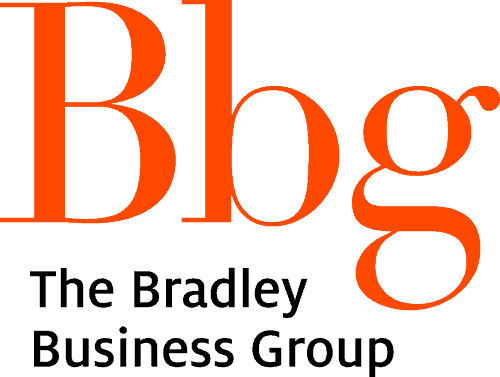 In Business-to-Business relationships, credibility is key. Buyers seek to reduce risk and increase confidence. This is why so much high-level B2B work is attributed to relationships and referrals.
In Business-to-Business relationships, credibility is key. Buyers seek to reduce risk and increase confidence. This is why so much high-level B2B work is attributed to relationships and referrals.
However, it is not impossible to generate new leads from a cold audience and influence their decision to work with you, rather than the tried and true (e.g., the Big 4 Consulting Firms) or the familiar and good enough (e.g., the consultant they have been using for millennia).
Let’s assume that the lead has been generated and conversations have begun. You have explicitly shown your expertise and value that you can provide. Yet, there was no existing relationship between your firm and the prospect, so the relational depth is lacking. What can you do?
Presenting a Compelling Case Study to Win Over B2B Clients
When you hear “case study” I want you to think “testimonial on steroids”. We really want to juice this up (with legitimate, clear and strong claims; never false nor exaggerated).
The case study presents an opportunity for someone else to vouch for you. This is far stronger than you singing your own praises, no matter how strong a voice you have.
Selecting a Subject For Your Case Study
The purpose of your case study is to offer an extended outline of a successful and relevant project you have worked on that illuminates how you can similarly help your prospect. The keyword here is relevance.
- Relevant company type
- Relevant company situation
- Relevant project and outcome
In considering these three elements of relevance you want to target, the first thing you might think is “but I have dozens of situations with successfully helping different types of companies in different situations with different projects…”
That’s likely. So for you to select the initial case study, I suggest you decide on one based on an upcoming opportunity, since application makes creation clearer and easier, while keeping you accountable to the production. Alternatively, you can use the criteria of:
- What would be most commonly utilized?
- What types of projects would I like to see more of?
- What specific case would be most compelling to the widest range?
The final point above is tricky. The more general, the less impactful. (That applies to anything in marketing and sales.) Accordingly, I’d ask you to add a qualifier to “the widest range”. That qualifier refers back to our initial criteria: either the widest range of company types or the widest range of company situations. If you can focus on a highly specific outcome, the need for specificity in company type or situation lessens.
Three Steps in Creating Meaningful Case Studies
After you identify the case, developing a case study that possesses the depth necessary to win over clients can be simplified into a three-step process:
Step One: Ask the Right Questions
Questions should illuminate the situation faced before, during, and after working with you. Remember, this is from the client’s perspective, but we want to guide them along for best efficacy and efficiency in developing this case. I like to study high-level interviewers to hear how they ask questions to draw out authentic and interesting answers. Here are a few basics to get you started:
- What was the challenge the client faced?
- Why was it a challenge?
- What process did they go through to solve this challenge?
- What was different from the typical projects you do on a day-to-day basis?
- What was the outcome of this work?
- Why is the result significant? (The “so what?”)
Go through these questions on your own first in your perspective, and then again from the clients perspective. Answer them and look for what is boring and what is exciting. Begin tailoring these questions so that when the client answers them, they can be drawn to areas of significance.
Step Two: Write the Case Study
The case study should be clear and simple to absorb. You don’t want this to be “work” for the prospects. Typically, I use the “Challenge, Solution, Result” framework to structure the case. This framework outlines what the challenge was like for the client before working with you. It discusses the solution your company employed during their work with you, and the result or outcome experienced after work with you. Your questions from the previous step should translate in such a way that they follow these three areas: Challenge, Solution, Result.
First, script out the case study for your client. Then, without showing this case study to them, have them answer the questions from Step One and adapt their answers to your case study. When complete, you can review the case study with the client for their revision.
- Emphasize specificity over generalities. Specificity = Believability
- Be concise, clear, and helpful to the reader
Step Three: Packaging the Case Study
Presentation is important in business-to-business relationships. Whether you operate a consultancy, accounting firm, or any professional service, you have likely experienced the truth of this first-hand, even if it was losing business to a better presented though inferior competitor. We don’t want to allow that to happen.
Case studies are easiest to put together in written form or as web pages. However, you can opt for a video case study, which is particularly powerful and provides variety in your marketing and sales collateral. I would recommend this if given the opportunity.
Whatever you choose, remember to make it easy to absorb and interesting, without losing impact in the end-to-end experience (whether top-to-bottom of a page or start-to-finish of a video).
- If written, keep the case study to a one-page PDF ideally
- Include photography, if possible
- Add a call-to-action early on and at the end that calls the reader to take a step forward with you
- Study copywriting or hire a copywriter to perfect the final form
- Include your company logo and contact info
- Quality control is important: double and triple-check for errors
As a final step, plan how this will be used by your marketing and sales teams and execute. Case studies can be extremely effective if they are utilized. The same is true of all marketing and sales tactics. Unfortunately, the most common problem in marketing is the lack of consistency. Change that and whatever you do will be exponentially more effective.
This article is an adapted excerpt from “Getting Digital Marketing Right” (David J. Bradley, 2015).
Attribution: ImageCreator – http://www.imagecreator.co.uk


